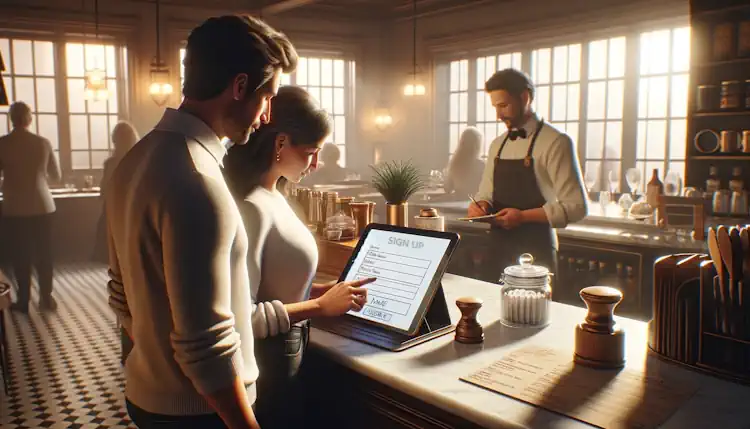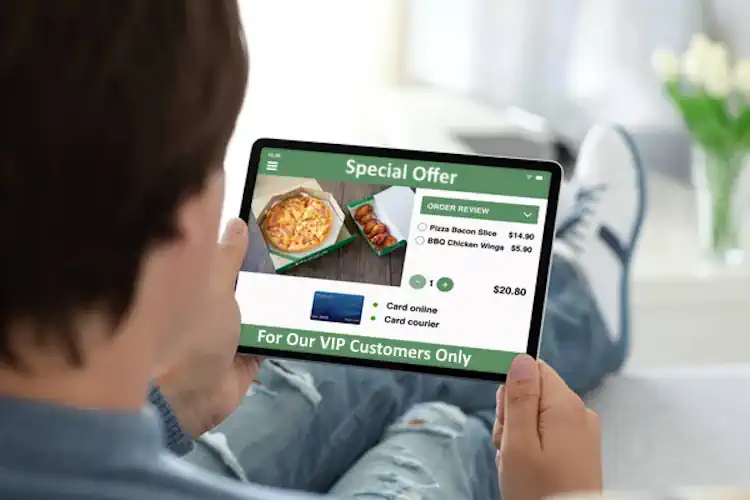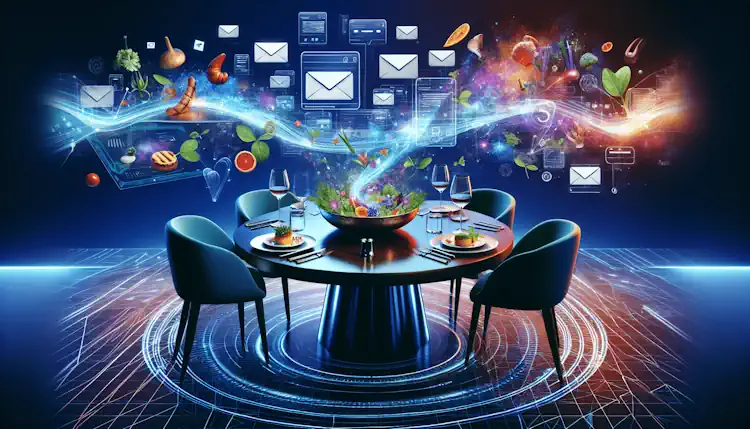In the bustling world of dining and food service, mastering the art of restaurant email marketing can set your establishment apart from the competition, ensuring your tables are always full and your customers are always satisfied.

“The Ultimate Guide to Restaurant Email Marketing” is your all-in-one resource to understand how to craft captivating emails that entice taste buds and bring diners through your doors.
From the initial setup of your mailing list to crafting messages that resonate with foodies everywhere, this guide covers it all, ensuring your email marketing efforts are as delectable as the dishes you serve.
Building an Email List
Building an email list is a foundational step in restaurant email marketing. This crucial process involves gathering emails from current and potential customers, allowing you to communicate directly and personally. Let’s dive into how you can efficiently gather those valuable email addresses.
Creating an opt-in form
Create an opt-in form for your website that’s both simple and enticing. You want to make the process as effortless as possible for visitors. Highlight the benefits they’ll get by subscribing, such as exclusive deals or insider news about your restaurant. Ensure your opt-in form is prominently placed on your homepage and, if possible, on every page of your site. Remember, clarity and convenience are key.
Offering incentives for sign-ups
To make your opt-in form even more attractive, offer incentives for sign-ups. This could be a discount on their next meal, a free appetizer, or a drink. These incentives not only encourage more sign-ups but also increase the chances of your subscribers visiting your restaurant. It’s a win-win situation: customers feel rewarded, and you get a direct line of communication with them.
Collecting customer emails in-store
Don’t limit your email collection to online efforts – your physical restaurant space is a goldmine for gathering email addresses. Train your staff to ask customers for their email at checkout or when they’re enjoying their meal. Consider using a digital device for inputting their details to minimize errors and make the process quicker. You could also offer a small incentive for customers who sign up in-store.

Using social media to promote email sign-ups
Leverage your restaurant’s social media presence to encourage email sign-ups. Share posts that highlight the benefits of joining your email list, including any exclusive offers or content. You can also run social media contests that require an email sign-up to participate. This approach not only boosts your email list but also increases your social media engagement.
Segmentation and Personalization
Once you’ve built up your email list, it’s essential to segment it and personalize your emails. This targeted approach ensures that your communications are relevant and engaging to each recipient, significantly improving your email marketing effectiveness.
Importance of segmenting your email list
Segmenting your email list means dividing your subscribers into smaller groups based on specific criteria, such as their dining preferences, birthday month, or how frequently they visit your restaurant. This allows you to tailor your content, offers, and messages to resonate with each segment, increasing the relevance and effectiveness of your emails.
Creating customer personas
Start by creating customer personas – fictionalized profiles of your ideal customers. These profiles help you understand your customers’ needs, preferences, and behaviors, guiding you in tailoring your emails to meet their expectations. Consider factors like age, dining preferences, frequency of visits, and spending behavior when creating these personas.
Tailoring email content based on customer preferences
Based on your customer personas and segments, tailor your email content to match their preferences. For example, if you have a segment that frequently orders vegetarian dishes, send them emails highlighting your latest vegetarian options and exclusive deals on those meals. Personalization shows your customers that you understand and value their preferences, boosting their loyalty.
Using merge tags to personalize emails
Merge tags allow you to automatically insert personalized elements into your emails, such as the recipient’s name or their favorite dish. This level of personalization can significantly increase the open and engagement rates of your emails, making your subscribers feel valued and understood.
Creating Engaging Email Content
The success of your email marketing efforts heavily relies on the content of your emails. Making your emails engaging and appealing ensures your messages stand out in a crowded inbox.
Crafting compelling subject lines
Your email’s subject line is the first impression subscribers have of your message. Make it eye-catching, relevant, and compelling to encourage them to open the email. Experiment with different styles, such as humor, urgency, or curiosity, to see what resonates best with your audience.
Designing visually appealing email templates
A visually appealing email template is crucial for the overall enjoyment and engagement of your readers. Use your restaurant’s branding, including its colors and logo, to make your emails instantly recognizable. Ensure your template is clean, organized, and mobile-friendly, as many of your subscribers will likely be reading on their phones.
Using high-quality images of your dishes
High-quality, appealing images of your dishes can make your emails significantly more engaging. These images visually entice your subscribers and can be the deciding factor that prompts a visit to your restaurant. Make sure the photography is professional and showcases your dishes in the best light possible.

Including mouth-watering descriptions
Complement your images with mouth-watering descriptions of your dishes. Describe the flavors, ingredients, and preparation methods in a way that makes your subscribers eager to try them. A well-crafted description can be incredibly persuasive and boost your reservation numbers.
Experimenting with interactive content
Interactive content, such as polls, surveys, or quizzes, can significantly boost engagement in your emails. They not only entertain but also offer valuable insights into your subscribers’ preferences, allowing you to tailor future communications more effectively.
Incorporating user-generated content
Including positive reviews or user-generated content, such as photos of diners enjoying your restaurant, adds authenticity and trustworthiness to your emails. It also encourages other subscribers to share their experiences, creating a vibrant, engaged community around your brand.
Promotions and Discounts
Offering exclusive discounts and running promotions through your email list are effective strategies to drive more business to your restaurant.
Offering exclusive discounts to email subscribers
Provide your email subscribers with exclusive discounts that aren’t available elsewhere. This not only incentivizes sign-ups but also makes your subscribers feel valued and special, encouraging them to visit your restaurant more often.
Running limited-time promotions
Limited-time promotions create a sense of urgency, encouraging customers to act quickly. Whether it’s a special discount, a unique menu item available for a short time, or a themed dinner night, these promotions can significantly boost foot traffic and sales.
Creating flash sales and deals
Flash sales and deals are an excellent way to spur immediate action from your subscribers. Offering a significant discount or a special deal for a very limited time can lead to a quick spike in reservations and orders.
Rewarding loyal customers with special offers
Identify and reward your most loyal customers with special offers, such as a free meal on their birthday, exclusive access to new dishes, or VIP seating options. These gestures not only strengthen loyalty but also turn your regular customers into vocal advocates for your restaurant.

Email Automation
Email automation streamlines your marketing efforts, ensuring timely and relevant communication with your subscribers without requiring manual intervention for each email sent.
Setting up welcome emails
A welcome email is the first exchange between your restaurant and a new subscriber. Use this opportunity to express gratitude for their interest, offer a signup incentive if you haven’t already, and set the tone for future communications. Make it warm, welcoming, and reflective of your brand’s personality.
Implementing triggered emails
Triggered emails are sent automatically in response to specific actions by your subscribers, such as making a reservation, celebrating a birthday, or reaching a loyalty milestone. These timely, relevant emails enhance the customer experience by showing that you pay attention to their interactions with your restaurant.
Sending birthday and anniversary promotions
Recognize and celebrate the personal milestones of your subscribers with special promotions, such as a free dessert or a discount on their birthday or anniversary. These gestures add a personal touch to your emails and can increase customer satisfaction and loyalty.
Re-engaging inactive subscribers
Automate emails targeting subscribers who haven’t opened or clicked through your emails in a while. Offer them a special deal or ask for feedback on why they’re disengaged. Sometimes, a small nudge is all it takes to rekindle their interest in your restaurant.

Tracking and Analytics
To improve your restaurant email marketing efforts continuously, you need to track performance and understand your analytics.
Monitoring email open rates and click-through rates
Email open rates and click-through rates are key indicators of how engaging your emails are. Monitor these metrics to identify trends, see what content performs best, and adjust your strategy accordingly. A low open rate might suggest a need to improve your subject lines, while a low click-through rate indicates that your email content or offers may not be compelling enough.
Using A/B testing to optimize email campaigns
A/B testing involves sending two variations of an email to see which performs better. Test different subject lines, email content, images, or calls to action to continually refine and improve your emails. Use the insights gained from A/B testing to inform future email campaigns.
Analyzing customer behavior through email metrics
Email metrics provide valuable insights into customer behavior. By analyzing how subscribers interact with your emails, you can tailor future content to better meet their interests and needs. For example, if you notice high engagement with emails featuring new dishes, consider focusing more content on your menu innovations.
Measuring the impact of email marketing on sales
To truly understand the effectiveness of your email marketing efforts, you need to track how they impact your restaurant’s sales. Use tracking links in your emails and monitor reservation and order rates following your email campaigns. This data helps you calculate the return on investment (ROI) of your email marketing, guiding future budgeting and strategy decisions.
Integration with CRM and POS Systems
Integrating your email marketing with your Customer Relationship Management (CRM) and Point of Sale (POS) systems can automate processes and provide a wealth of data to tailor your marketing efforts more precisely.

Syncing email marketing with customer relationship management (CRM) systems
Integrating your email marketing software with your CRM system allows for a seamless flow of customer data between the two. This integration enables you to segment your email list more effectively, personalize your communications based on detailed customer profiles, and track interactions across all touchpoints.
Integrating email campaigns with point-of-sale (POS) systems
By integrating your email campaigns with your POS system, you can tailor promotions based on purchase history, track the redemption of email offers in real time, and measure the direct impact of your email marketing on sales. This holistic view of customer behavior and sales data is invaluable for refining your marketing strategy.
Automating data transfer between platforms
Automated data transfer between your email marketing, CRM, and POS systems ensures that all platforms are up-to-date with the latest customer information. This automation saves time, reduces the risk of data entry errors, and enables a more dynamic and responsive email marketing strategy.
Maintaining Email Deliverability and Reputation
Ensuring your emails reach your subscribers’ inboxes is crucial for the success of your email marketing campaigns. Follow best practices to maintain high deliverability and a strong sender reputation.
Avoiding spam filters
To avoid your emails being marked as spam, ensure you’re only sending to subscribers who have explicitly opted in. Keep your email content relevant and engaging, avoid using too many sales-heavy phrases, and include a clear unsubscribe option in every email.
Implementing double opt-in for subscribers
A double opt-in process requires subscribers to confirm their email address after signing up by clicking a link in a confirmation email. This extra step helps ensure that your email list is high-quality and engaged, improving your deliverability rates and protecting your sender reputation.
Practicing good list hygiene
Regularly clean your email list by removing inactive subscribers and those who have unsubscribed. This practice not only improves your deliverability and engagement rates but also gives you a more accurate picture of your email marketing performance.
Monitoring and improving email sender score
Your email sender score influences whether your emails reach the inbox or the spam folder. Monitor your score using tools provided by email service providers and take steps to improve it, such as maintaining list hygiene, ensuring high engagement rates, and adhering to best email practices.
Building Customer Loyalty
Email marketing is a powerful tool for building and maintaining customer loyalty. Personalized communication and exclusive offers make your subscribers feel valued, encouraging repeat business and referrals.

Sending personalized thank-you emails
A simple, personalized thank-you email after a customer’s visit can make a big difference in how they perceive your restaurant. It’s an easy but impactful way to show appreciation, foster a connection, and encourage them to dine with you again.
Providing exclusive perks to loyal customers
Reward your most loyal customers with exclusive perks, such as early access to new menus, special seating options, or invites to private events. These benefits not only recognize and reward their loyalty but also incentivize continued patronage.
Creating a VIP email program
Consider creating a VIP email program that offers tiered rewards based on the frequency of visits or spending levels. This program can include exclusive discounts, birthday and anniversary offers, and first looks at new dishes or events, further deepening the loyalty of your top customers.
Encouraging customer feedback and reviews
Use your email list to encourage feedback and reviews from your customers. Positive reviews can be shared in future emails or on social media, while constructive feedback provides valuable insights for improving your service. Making your customers feel heard strengthens their emotional connection to your restaurant.
Measuring Success and ROI
To ensure your restaurant’s email marketing efforts are paying off, it’s essential to measure their success and calculate the return on investment (ROI).
Defining key performance indicators (KPIs)
Define clear key performance indicators (KPIs) for your email marketing campaigns, such as open rates, click-through rates, conversion rates, and revenue generated. These metrics help you understand the effectiveness of your efforts and where there’s room for improvement.
Calculating return on investment (ROI)
Calculate the ROI of your email marketing by comparing the revenue generated from your campaigns against the costs of running them. This calculation helps you assess the financial viability of your email marketing efforts and justify continued investment.
Tracking customer lifetime value (CLV)
Understanding the lifetime value of customers acquired through email marketing gives you insight into the long-term impact of your campaigns. Calculate CLV by multiplying the average purchase value by the number of repeat transactions and the average retention time for a customer.
Analyzing customer acquisition cost (CAC)
Calculate the customer acquisition cost (CAC) by dividing the total costs associated with acquiring new customers through email marketing by the number of customers acquired. This metric helps you understand the efficiency of your email marketing in attracting new business.

By following these comprehensive strategies, your restaurant can leverage email marketing to not only reach and engage more customers but also to build lasting relationships that drive repeat business and bolster your restaurant’s success.

